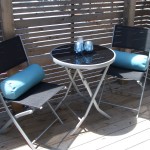The Community Diversity and Integration Symposium looked to answer this question during a community discussion with Halifax residents on May 12, 2012. What does integration mean to Halifax communities?
Below are just a few of the many understandings of the term ‘integration’ expressed by over 60 participants who attended the Symposium hosted by the Canadian Museum of Immigration at Pier 21.
“Integration is…
…togetherness, unity”
…belonging, appreciation, friendship and home!”
…happening when everyone starts to feel comfortable”
…de-colonizing/healing”
…taking an active role in the community and helping others to become active members!”
…belonging and success in a new culture.”
To explore the various facets of integration, the symposium was organized into eight conversation tables, each facilitated by a volunteer diversity facilitator. The facilitators had all previously undergone training with Immigrant Settlement and Integration Services (ISIS) to host cross-cultural conversations about issues of multiculturalism and diversity.
Examples of explored themes included
- Strengthening a sense of community, belonging and identity
- Transforming our communities to become more integrated
- Looking further beyond multicultural optics and diversity
- Building connections and relations between our communities
- Going where people are: the role of a public space in community integration
- Community integration in rural Nova Scotia
- Community integration and francophone communities
Conversations were lively, focusing on issues of respect for cultural diversity and creating a sense of belonging. Some attendees consider integration a two-way process – one that requires the active participation of both newcomers and established residents. Other participants expressed that a two-way integration process is too narrow in scope. Integration, as an unfolding process, is multifaceted: something new is created through interactions by people from multiple, diverse cultural backgrounds participating in their community together.
Other discussions examined the implications of the term ‘integration’ through a post-colonial lens. They examined the precariousness of the term for people belonging to historically marginalized communities, such as the indigenous African Nova Scotian and Aboriginal populations.
New questions emerged, such as: How do we facilitate broader community dialogue about integration? How do we develop a community integration strategy that works in Nova Scotia?
Merek Jagielski, a key Symposium organizer, commented, “This event has proven that we need to continue on with community conversations, and there is a great need for that. Definitely, we will be working on capturing those ideas and transforming them into some strategic directions in community integration… we are charting new waters.”
This symposium highlighted the diverse scope of community views on integration. What are your thoughts on community diversity and integration? How do you see diversity and integration shaping a community?
For more information about Canadian Museum of immigration public programs, visit www.pier21.ca.
Philippa Gunn is the Adult Public Programs Coordinator at the Canadian Museum of Immigration at Pier 21.
Source: http://feedproxy.google.com/~r/SmartcityBlog/~3/7NZWI7HMWE4/the-many-faces-of-integration.html




